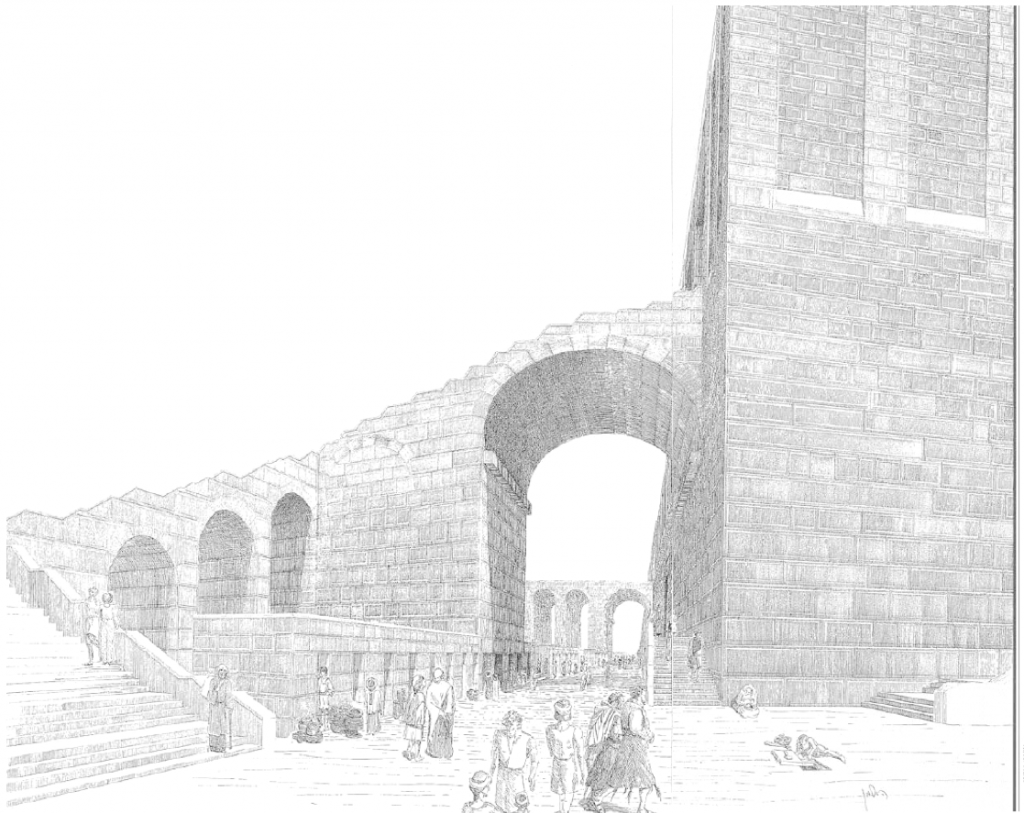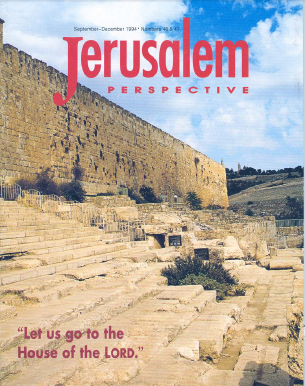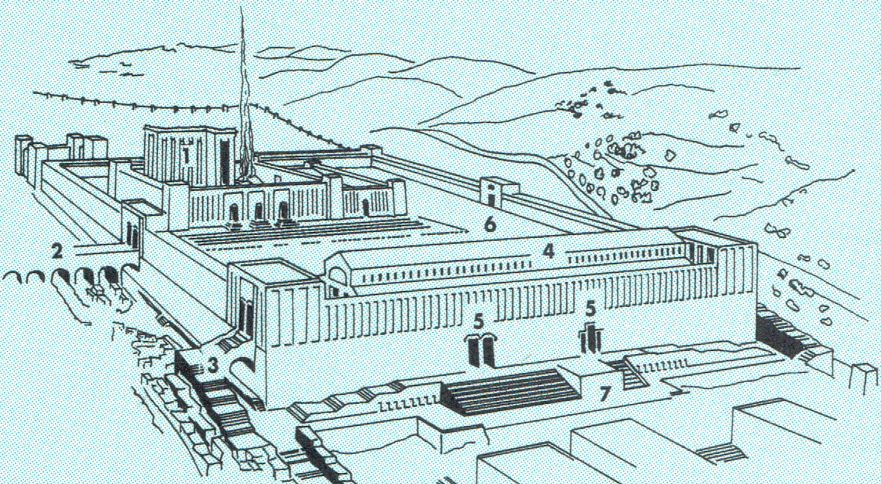This article originally appeared in the JP magazine as a sidebar attached to Joseph Frankovic’s “Remember Shiloh!”
Nearly all New Testament commentaries identify the outer-most court of the Temple, sometimes referred to as the Court of the Gentiles, as the location for the “Cleansing of the Temple” incident. It seems odd, however, that buying and selling would have been permitted even in this court. Professor Shmuel Safrai states that it is unthinkable that any commercial activity took place in the Temple courts, including the Court of the Gentiles. It was not even permitted to ascend the Temple Mount with a purse (Mishnah, Berachot 9:5). Safrai maintains that the most likely places for the “Cleansing” are the Royal Portico or the shops in the vicinity of the southern stairway (private communication).
One would expect that worshippers approaching the Temple first passed the vendors, then proceeded to public mikva’ot where they could ritually immerse, climbed the massive southern stairway, entered the Huldah Gates (compare Mishnah, Middot 1:3), and ascended an underground ramp from which they exited into the Court of the Gentiles. Shops built into vaults supporting a walkway running flush with the southern wall from its western to eastern corner have been found in archaeological excavations. The southern stairway ascended to this walkway opposite the Huldah Gates. The vendors mentioned in Luke 19:45 may have been conducting business in the shops built into the vaults adjacent to the stairway.[1]
Two other sites within the Temple environs where business transactions occurred were the halls of the Royal Portico and the shops around the base of Robinson’s Arch.[2]

































































































